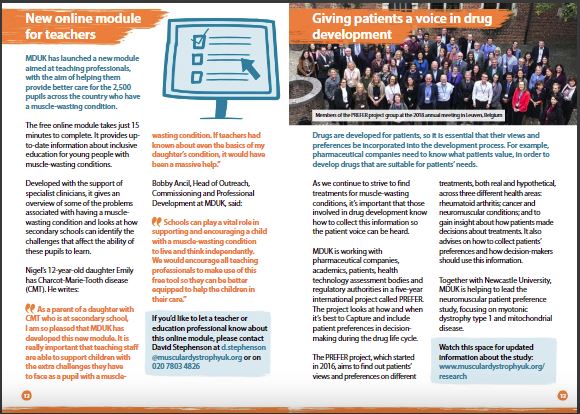
You can assist researchers on a couple of issues in myotonic dystrophy. Read more about this ongoing study. (Posted in May 2019)
Studies of skeletal muscle and gastrointestinal dysfunction in myotonic dystrophy and controls
Purpose
This study is designed to obtain data regarding 2 aspects of the phenotype in myotonic dystrophy (dystrophia myotonica or DM). These are multi-system diseases leading to symptoms in many regions of the body including skeletal muscles, central nervous system and the GI tract.
The aims of the study are two-fold: 1. to obtain physiological recordings of muscle contraction and motor unit activation in selected skeletal muscles to obtain possible outcome measures for future drug trials as well as understand the physiological underpinnings of motor dysfunction in these patients; 2. to study the role of the gut microbiome in relation to the gastro-intestinal dysfunction in DM patients.
Procedures
- Tasks to measure strength, fatigue, force and reaction time
- Blood and stool samples
For more details about study procedures, please contact Stephen Gullet:
- stephen.gullett@neurology.ufl.edu
- 352-273-6003
Eligibility
- Over the age of 18
- Molecularly confirmed DM 1 or DM 2 (symptomatic subjects in whom diagnosis is based on DNA analysis in affected family members will also qualify)
- Ambulatory with or without assistive devices
- Competent and willing to provide informed consent and participate in study procedures
Additional criteria apply, for more information please contact Stephen Gullet:
- stephen.gullett@neurology.ufl.edu
- 352-273-6003


